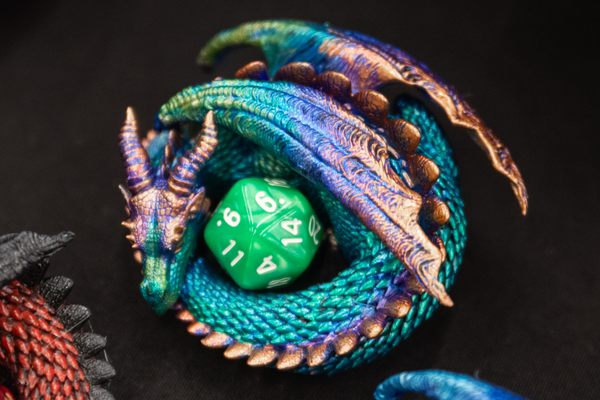Wonder Is Everywhere: Harlem Renaissance, the Return of the Ruby Slippers, and More From Around the Web
Get a peek into what we’re obsessed with right now.
Wonder is everywhere. That’s why, every other week, Atlas Obscura drags you down some of the rabbit holes we encounter as we search for our unusual stories. We highlight surprising finds, great writing, and inspiring stories from some of our favorite publications.

The Dinner Party That Started the Harlem Renaissance
by Veronica Chambers and Michelle May-Curry, The New York Times
The hundred or so guests who received an invitation to dinner at the Civic Club in Downtown Manhattan on March 21, 1924, had no idea that the evening’s revelry would birth the Harlem Renaissance, a celebrated era in which Black intellectuals and artists flourished in the city.
The Women Safari Guides Navigating Botswana’s Waters
by Carmen Roberts, BBC
Steering a traditional mokoro canoe through the waters of Botswana’s Okavango Delta has traditionally been a job reserved for men. But a new generation of women safari guides can now be seen wielding nkahsi, the poles used to propel the crafts through the 7,700-square-mile river system.
The Eider Keepers
by Devon Fredericksen, BioGraphic
Each spring, Norway’s Vega Archipelago is home to flocks of nesting eiders—and about 50 “eider keepers,” people who spend months living in rustic cabins on the farthest-flung islands just south of the Arctic Circle, watching over the birds and their eggs. When the ducklings hatch and the birds leave the nest, the keepers collect the soft eiderdown they’ve left behind, maintaining a 400-year-old tradition.
Unearthing the Origins of Plantation Slavery on São Tomé
by M. Dores Cruz and Larissa Thomas, Sapiens
The island nation of São Tomé and Príncipe off the West African coast played an important—but overlooked—role in the history of slavery. The first-ever archaeological research undertaken on São Tomé has uncovered the origin of plantation slavery in the 1500s. The remnants of Praia Melão, a Portuguese mill and estate, reveal how these enslaved sugar makers lived.


Newly Discovered Australian Beetle Almost Mistaken for Bird Poop
by Tiffanie Turnbull, BBC
An entomologist vacationing in Australia’s Gold Coast hinterland thought the white speck he spotted was nothing more than a bird dropping. But a second glance revealed a new kind of longhorn beetle, one with long white hair that stands up like a mohawk.
Stolen Japanese Art Found in a Massachusetts Attic
by Juliana Kim, National Public Radio
Siblings cleaning out their deceased father’s Massachusetts home were a little surprised to find 22 Japanese antiques dating back to the 1700s, among them portraits, ceramics, and a hand-drawn map of Okinawa. They were shocked when they discovered several of them were included on the FBI’s National Stolen Art File.

Public Invited to See “One of Boston’s Best Kept Secrets”
by Gemma Gadd, Lincolnshire World
Visitors have long sought out the Boston Stump—officially St. Botolph’s Church in Boston, England—for its medieval misericords, 62 elaborately carved little benches that offered some relief to churchgoers during endless services. Now the Stump’s library, with books dating back more than eight centuries, is also open to the public for the first time.
Dorothy’s Ruby Slippers Have Returned Home to Minnesota. Will They Stay There?
by Sonja Anderson, Smithsonian Magazine
Nearly 20 years ago, a pair of shoes worn by Judy Garland in The Wizard of Oz were stolen from the Judy Garland Museum in the actress’s childhood home of Grand Rapids, Minnesota. They were finally recovered in 2018 and have now been returned to their rightful owner, who plans to put the ruby slippers—estimated to be worth $3.5 million—up for auction in December.



























































Follow us on Twitter to get the latest on the world's hidden wonders.
Like us on Facebook to get the latest on the world's hidden wonders.
Follow us on Twitter Like us on Facebook